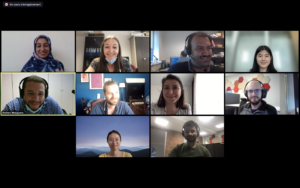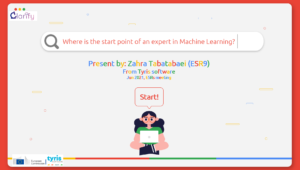What do we need to know about Machine Learning?
In CLARIFY project, a team of a wide diversity in various fields have been created, from pathology to technology, named as ESRs. The major attempt here were to make a bridge between computer and medical science in order to improve quality of life and boost health condition for people. This could only be achieved by creating a group of engineers with deep understating of pathology, and pathologists who has hand on engineering. Therefore, the secret to success for us is to keep pace with interdisciplinary interactions and knowledge sharing between members.
In fact, for bridging the gaps, many of our efforts had to be initiated from the very first brick. Andres (ESR12), for example, was a pioneer elaborated on essentials about pathology and skin cancers, leading to filling a gap in medicine. Simultaneously, Farbod (ESR10) review a relative research paper and introduced a clear overview of the topic. Then, on 18 Jun 2021, I (ESR9) attempted to illustrate some important concepts of AI (Artificial Intelligent) and ML (Machine Learning) for my colleagues so as to cover up the engineering part.
In this meeting, I tried to cover the main concepts of classification, clustering, regression, etc. with some examples from fruits to Malarial cellular. For example, I illustrated “What is classification?” by considering a bag of fruits, then I shifted to Malarial cellular which is more related. During the meeting, we discussed some updates and answered different questions. Here, there is a shortlist of what we had in our meeting.
- What are neurons and neural networks?
- What are AI and ML?
- Why do we need AI/ML?
- How canwe have a deep neural network?
- Different parts of ML such as
-
- Classification
- Regression
- Clustering
- Feature extraction/reduction
- And …
- Where can we use these methods?
- How do we use all these concepts?
- What is a decision tree?
- What are CNN and its applications?
And now, by having these basics, in the next meeting, we are going further with the ML, promoting a deeper awareness about the concepts. To find out, please keep the track!!
Zahra Tabatabei – ESR9.



